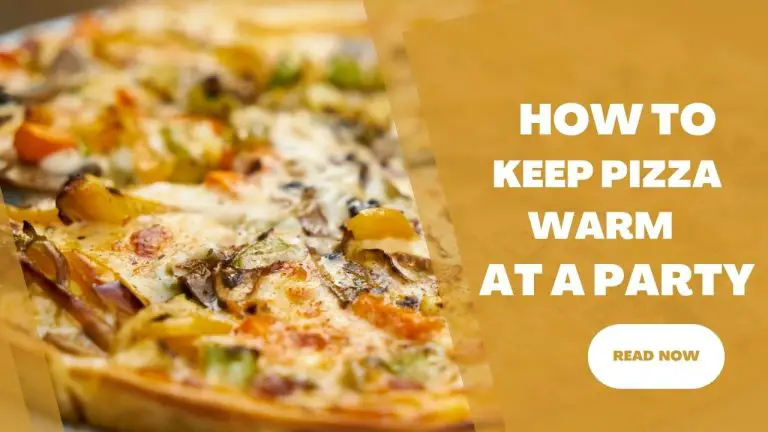how to roll pizza dough thin
The allure of a Thin Crust is undeniable, as it offers a delightful contrast to the rich toppings and savory sauces that grace a well-made pizza. Yet, beyond its culinary appeal, understanding Why Rolling Pizza Dough Thin Matters can elevate your pizza-making skills to new heights. In this comprehensive guide, we will walk you through how to roll pizza dough thin starting from the very beginning.
Techniques for Rolling Thin Dough
When it comes to crafting the perfect thin-crust pizza, mastering the art of rolling the dough is a crucial skill. The process requires precision and a deep understanding of the dough’s characteristics. In this article, we’ll explore some expert techniques that will elevate your thin-crust pizza game to new heights.
Bring your dough to room temperature
Before you even think about rolling out your pizza dough, it’s essential to bring your dough to room temperature. This step is often overlooked but is incredibly important. Cold dough is stiff and resistant to stretching, making it challenging to achieve that paper-thin crust we desire.
By allowing your dough to rest and come to room temperature, you’re giving it time to relax and become more pliable. This not only makes it easier to work with but also enhances the final texture of your crust. So, take your dough out of the fridge well in advance, typically 30 minutes to an hour before you start rolling.
Prep workspace with olive oil
To prevent your dough from sticking to the work surface, consider using a unique approach – olive oil. While many opt for flour, which can sometimes alter the dough’s texture, olive oil provides a smooth, non-stick surface that aids in maintaining the dough’s integrity.
Simply drizzle a small amount of olive oil on your work surface and spread it evenly. This thin layer of oil creates a slick surface that prevents the dough from clinging to the table or countertop. It’s a subtle yet effective technique that many professional pizza makers swear by.
Press dough before stretching
Before you dive into stretching the dough, there’s a crucial preliminary step: pressing the dough. Gently but firmly press down on the dough with your fingertips, starting from the center and working your way outwards. This initial step helps to flatten the dough slightly and distribute air bubbles evenly.
Pressing the dough not only makes it more uniform but also minimizes the risk of air pockets forming during the stretching process. These air pockets can lead to uneven cooking, which is the nemesis of a perfect thin-crust pizza.
Stretch with both hands
Now, let’s get to the heart of the matter – stretching the dough. This is where the magic happens, and the thin crust begins to take shape. The key here is to use both hands and the assistance of gravity.
Start by gently flattening the dough with your fingertips, as you did in the pressing step. Then, using both hands, place your knuckles near the center of the dough and gently begin to stretch it outward. Allow gravity to lend a helping hand; gravity will naturally pull the dough downward, elongating it without tearing.
Rotate the dough as you stretch, ensuring that you maintain an even thickness throughout. The goal is to create a thin, uniform circle, keeping in mind that the edges should be slightly thicker to form that perfect crust.
Stretch the Dough
One of the fundamental techniques for rolling thin dough is the gentle stretching method. After allowing your dough to rest and rise, lightly flour your work surface. Place the dough on the floured surface and use your fingertips to create an even border around the edge. This border will be the crust of your pizza.
Now, gently press down on the dough, working from the center outwards. Be cautious not to press too hard or puncture the dough. The goal is to stretch the dough into a larger circle gradually. If you encounter resistance, let the dough rest for a minute or two, allowing it to relax. Then, continue stretching.
Out on the Pizza Peel
Once your dough is adequately stretched, it’s time to transfer it to a pizza peel. A pizza peel is a flat, shovel-like tool that simplifies the process of transferring your pizza to the oven.
To make the transfer smooth, lightly dust the peel with flour or, for added flavor and texture, cornmeal. This prevents the dough from sticking to the peel. Carefully lift your stretched dough and place it onto the prepared pizza peel. Ensure that it’s centered to avoid any mishaps during the transfer.
Related; discover 5 different ideas on what to do with leftover pizza.
And Top
With your dough comfortably resting on the peel, it’s time to add your favorite toppings. Start with a thin layer of sauce; less is more in this case, as too much sauce can make your crust soggy. Use a ladle or the back of a spoon to spread the sauce from the center to the crust evenly.
Next, layer on your choice of cheese and toppings. Remember that a thin crust can’t support an excessive amount of toppings, so exercise restraint. Keep it balanced to ensure even cooking and a well-balanced flavor profile.
Your pizza is now ready to be slid onto a preheated pizza stone or baking steel in your oven. The intense heat will work its magic, turning your thin dough into a crispy, flavorful crust that’s ready to be savored.
Special Tips for Gluten-Free Dough
For those venturing into the realm of gluten-free pizza, there are some unique considerations to keep in mind. Gluten-free dough can be more delicate and less forgiving than traditional dough, but with the right techniques, you can still achieve a fantastic thin crust.

Extended Resting Time:
One of the most crucial aspects of working with gluten-free dough is Allowing Dough to Rest. Unlike regular dough, gluten-free varieties benefit from a longer resting period. This allows the flour to fully hydrate and the dough to relax, making it easier to roll thin.
Texture and Flavor Enhancement:
The extended resting time also has a significant Impact on Texture and Flavor. It allows the dough to develop a smoother, more pliable consistency, which is essential for rolling thin. Additionally, it gives the flavors time to meld, resulting in a tastier crust that complements your toppings beautifully.
Avoiding Common Mistakes
To ensure your journey to a perfect thin crust is a smooth one, it’s important to be aware of common mistakes that can compromise your efforts.
Gentle Pressure:
One of the most prevalent errors is Pressing Too Hard. It’s easy to get carried away with the rolling pin, but excessive pressure can lead to tears in the dough or uneven thickness. Remember, a gentle and steady hand is your best ally.
Avoid Overstretching:
While you want your dough to be thin, Overstretching the Dough can be problematic. Stretch with care, as overdoing it can result in thin spots that may burn during baking. Balancing thinness with structural integrity is key.
Edges Matter Too:
Don’t neglect the edges of your dough. Neglecting the Sides can lead to uneven cooking, where the center of the pizza is perfectly thin, but the edges are thicker. Pay equal attention to all parts of the dough to ensure uniformity in your crust.
FAQs
Wrapping Up
Rolling pizza dough thin is a crucial skill for achieving that perfect thin-crust pizza. By using the right type of flour, allowing the dough to rest, and following these FAQs for guidance, you can create a thin and crispy pizza crust that will elevate your homemade pizza to restaurant-quality standards. Experiment with different toppings and flavor combinations to create your own signature thin-crust pizza masterpiece. Happy baking!







